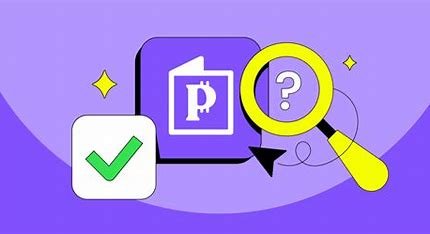
Photo by <a href="https://unsplash.com/@adventurer_ad" rel="nofollow">Abhinav Das</a> on <a href="https://unsplash.com/?utm_source=hostinger&utm_medium=referral" rel="nofollow">Unsplash</a>
Views: 0
Understanding Debt: The First Step Towards Financial Freedom
Debt can be defined as any amount of money borrowed by an individual or organization, which is required to be repaid, typically with interest. It is an essential concept in personal finance, and understanding the different types of debt is crucial for anyone seeking financial independence. The most common categories of debt include secured, unsecured, revolving, and installment debt. Secured debt is backed by collateral, such as a house or car, which allows lenders to reclaim the asset in the event of default. Conversely, unsecured debt, such as credit card balances and personal loans, is not tied to any specific asset, making it riskier for lenders and often resulting in higher interest rates.
Revolving debt, exemplified by credit cards, allows borrowers to access a credit limit and pay it down over time, whereas installment debt, which includes mortgages and auto loans, involves fixed payments over a predetermined period. Each type of debt carries its own implications and can affect an individual’s financial status differently.
The prevalence of debt in society is alarming. According to recent statistics, a significant portion of the adult population carries some form of debt, with averages often exceeding tens of thousands of dollars. This financial burden does not only impact one’s finances but can also take a considerable emotional toll. Families may experience stress and anxiety due to their obligations, leading to a decline in mental well-being.
Acknowledging the impact of debt is vital for individuals who aspire to achieve financial freedom. Recognizing debt as not merely a financial hindrance but also as a lifestyle choice is essential for embarking on the journey toward a debt-free existence. This transition can ultimately lead to a more satisfied and secure life, underscoring the critical need for effective debt management and reduction strategies.
Strategies for Achieving Debt-Free Living
Eliminating debt can seem daunting, yet employing effective strategies can significantly ease the process. Two popular methods for debt repayment are the snowball and avalanche techniques. The snowball method involves focusing on paying off the smallest debts first, thereby creating a sense of accomplishment and motivating individuals to tackle larger debts as they experience small wins. Conversely, the avalanche method prioritizes debts with the highest interest rates, minimizing total interest paid over time. By understanding which approach aligns with personal preferences and financial goals, individuals can craft a more effective debt repayment plan.
Budgeting is another critical component in the journey toward debt-free living. Establishing a clear and realistic budget allows individuals to track income and expenses meticulously. Allocating specific amounts for debt repayment, essential expenses, and discretionary spending aids in creating a balanced financial plan. Furthermore, individuals should aim to build an emergency fund, ideally covering three to six months of living expenses. This fund serves as a financial cushion, helping prevent the need to incur additional debt in case of unexpected expenses.
Negotiating with creditors can also be a game-changer. Many creditors are willing to work with debtors to create amicable solutions, such as adjusting payment terms or interest rates. Additionally, debt consolidation might prove beneficial for those juggling multiple debts. By combining debts into a single loan with a lower interest rate, individuals can simplify debt management. Lastly, leveraging financial tools and apps can streamline tracking progress, offering insights and reminders that help maintain motivation. Utilizing these strategies can empower individuals to take control of their financial situations, steering them towards a debt-free future.
Creating a Sustainable Budget: The Key to Financial Freedom
Establishing a sustainable budget is critical for anyone aiming to achieve financial freedom and live a debt-free life. A well-structured budget serves as a roadmap for managing finances effectively, allowing individuals to track their income and expenses accurately. The first step in this process is to comprehensively assess all sources of income, while concurrently documenting every expense, both fixed and variable. This practice helps delineate where money is being allocated and highlights areas for potential savings.
When determining a budget, it is essential to differentiate between needs and wants. Needs encompass essential expenses such as housing, utilities, and food, while wants include discretionary spending like entertainment or luxury items. This distinction will guide individuals in prioritizing their spending and curtailing unnecessary expenses, steering them closer to their financial goals.
Setting realistic financial goals is another cornerstone of effective budgeting. These goals can range from building an emergency fund to saving for retirement or purchasing a home. Using popular budgeting methods, such as the zero-based budgeting approach, can aid in achieving these objectives. This method allocates every dollar of income to specific expenses or savings categories, ensuring that no money is left unassigned at the end of the month. Alternatively, the 50/30/20 rule can provide a simpler framework, where 50% of income goes towards needs, 30% towards wants, and 20% towards savings or debt repayment.
Discipline is crucial when adhering to a budget. It is essential to regularly review and adjust the budget to accommodate changing financial circumstances, whether due to income fluctuations or unexpected expenses. This flexibility allows individuals to maintain their commitment to a debt-free lifestyle, making it easier to navigate financial challenges as they arise.
Maintaining a Debt-Free Lifestyle: Tips for Long-Term Success
Achieving a debt-free lifestyle is a significant milestone in personal finance, but maintaining that status requires ongoing effort and strategic planning. One of the most vital strategies for long-term success is responsible credit card use. While credit cards can offer convenience and rewards, they can also pose a risk if not managed properly. Establishing a habit of paying off the full balance each month can prevent interest accumulation and maintain your debt-free status. Consider setting spending limits and regularly monitoring your transactions to stay within budgetary constraints.
Another crucial aspect of maintaining a debt-free lifestyle is embracing a proactive approach towards larger purchases. Instead of relying on credit, saving for these expenditures fosters financial responsibility and curtails unnecessary debt accumulation. Creating a dedicated savings account for planned purchases can provide a clear framework for achieving your financial goals without reverting to credit dependency.
Financial education plays a significant role in sustaining a debt-free future. Continuously learning about budgeting, investment strategies, and financial management equips individuals with the knowledge to make informed decisions. By attending workshops, reading books, or following relevant blogs and podcasts, anyone can enhance their financial literacy, which is vital for preventing pitfalls that may lead to debt.
Potential challenges such as lifestyle inflation and unexpected expenses can threaten your hard-earned financial freedom. Lifestyle inflation occurs when individuals increase their spending as their income rises, which can lead to unnecessary expenditures. To combat this, maintaining a budget that prioritizes savings and essential expenses is crucial. Similarly, building an emergency fund to address unforeseen costs can provide a safety net, preventing the use of credit as a fallback option.
By cultivating these habits and strategies, individuals can secure their financial freedom and confidently navigate the complexities of personal finance.





